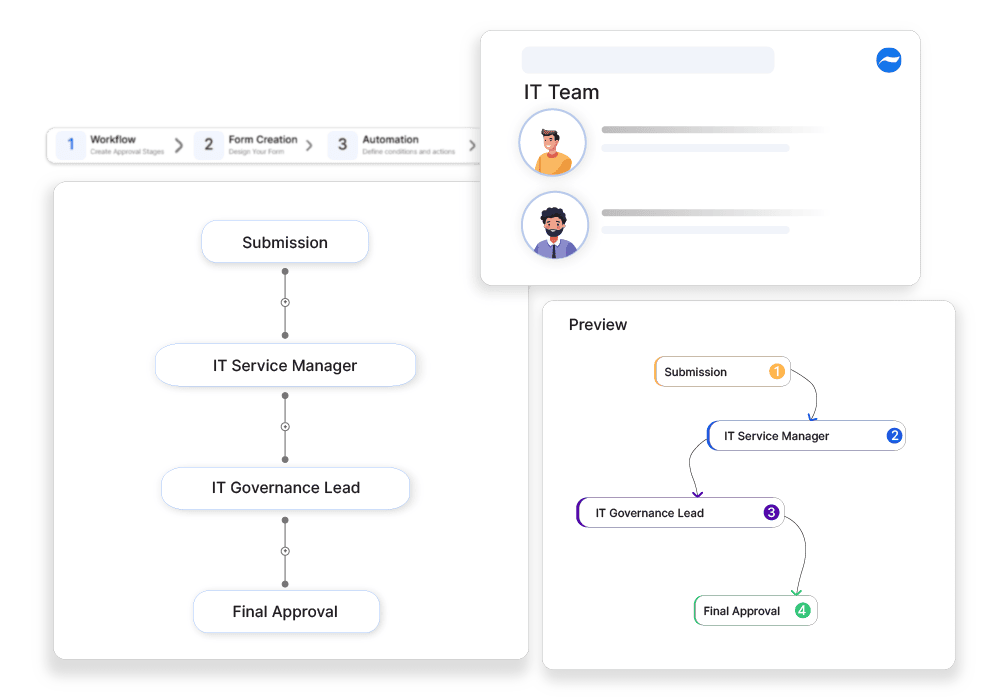Operational Level Agreement (OLA) Approvals
Automate OLA approvals with smooth, efficient workflows.

Why automate?
OLAs (Operational Level Agreements) set clear expectations and responsibilities between IT teams and departments. They help keep IT services running smoothly. The approval process checks if the agreement terms align with the companys goals. Normally, this process can be slow and complicated. It involves many people, like IT managers and department heads. Handling it manually can cause delays and confusion. It also makes tracking OLA status difficult, leading to inconsistent service and unmet expectations. Automation makes the OLA approval process easier. It connects all relevant people, sends requests to the right approvers, and tracks progress in real time. This makes approvals faster and more accurate, improving service consistency. With automated OLA approvals, you get more reliable service, better accountability, and clearer alignment with business goals. Plus, you get an audit trail that ensures transparency and compliance.
How Cflow Can Help Automate the Process:
Customizable Approval Workflows:
Design workflows that send OLA requests to the right people automatically, making approval quick and efficient.
Real-time Status Tracking:
Track the status of OLA requests in real time. Automated updates keep everyone informed and reduce delays.
Standardized Approval Processes:
Cflow ensures every OLA follows the same process, reducing errors and making sure they meet organizational standards.
Detailed Audit Trails:
Cflow keeps clear records of all approvals, making it easy to track and review every step of the process.
Frequently Asked Questions
What is the purpose of an OLA?
It defines service responsibilities between internal IT teams.
How does an OLA differ from an SLA?
SLAs define agreements with customers, while OLAs govern internal teams.
Why are OLAs important?
They improve coordination between IT departments and ensure service consistency.



